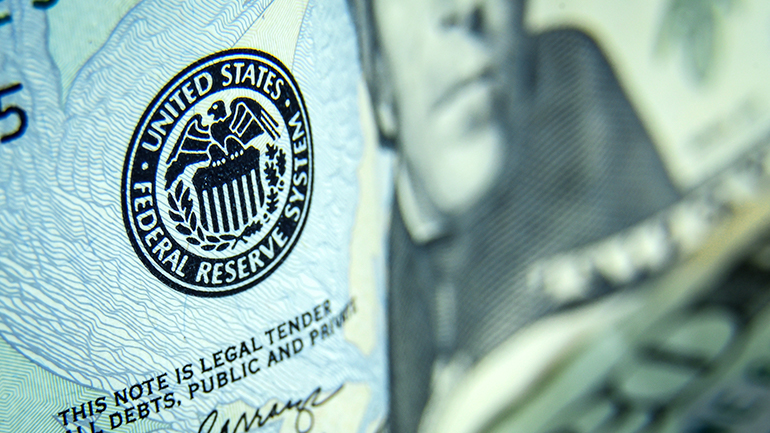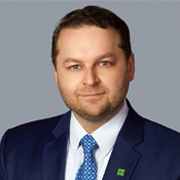November FOMC: Pivot Higher
By: Jan Groen, Oscar Munoz, Priya Misra, Gennadiy Goldberg, and Mazen Issa
November 7, 2022 - 7 minutes
The statement for this meeting got a slight overhaul, geared towards a downshift to a steadier hiking pace. As we wrote in our preview, a target range of 3.75-4.00% would be a level at which the FOMC could be shifting to a more measured path of hikes to start grinding down inflation. The reference in the statement to "lags" in "determining the pace of future increases" was clearly geared to signaling that downshift. The pace of 75bps rate increases was always meant as a front-loading exercise to make up for lost ground earlier in the year and to get the Fed to a more neutral level instead of an accommodative one. Once achieved, the real work of reaching an appropriately restrictive policy stance would begin, hence the phrase "ongoing increases in the target range will be appropriate in order to attain a stance of monetary policy that is sufficiently restrictive to return inflation to 2 percent over time."
We not only witnessed a hawkish downshift by the Fed, but we also heard from a Chair Powell who's very determined to bring inflation down even if this necessitates inflicting a lot of pain to the economy in light of a stubbornly strong labor market. Communicating the downshift was always going to be a challenge given the FOMC's distaste of forward guidance and adherence to "data dependence" but, in the end, the press conference turned out to be masterclass of how to manage expectations. And markets broadly got the message: to expect a slower pace of hikes, but that the road towards the promised land of appropriately restrictive policy will be pointing up and up for a long time.
Changing our Fed Funds rate outlook
To break this dynamic, the Fed needs to slow down the labor market by a lot, and the only means by which it can achieve this is to hike more than what it and anyone else initially expected to be sufficient. We now project to see a 50bps hike in December, another 50bp move in February, followed by two 25bp hikes at the March and May meetings. Consequently, our projected terminal Fed Funds rate moves up from 4.75-5% in March to 5.25-5.50% in May. By the June meeting we expect the FOMC to announce a pause supported by appropriately adjusting its SEP.
This more aggressive than expected hiking path has an unfortunate consequence. The amount of real tightening that we expect now to happen will likely lead the economy to a recession in the second half of 2023. Consequently, we are of the view that by its December 2023 meeting the FOMC would feel the need to cut its Fed Funds rate by 25bp.
Rates Market Implications
What next for rates?
However, the market should ultimately price in not just the Fed reaction function but also the economic outlook. Chair Powell signaled a terminal rate that is likely to be higher than the previous dot plot implied terminal rate of 4.75%. We now expect the Fed to take rates to 5.5% by May 2023 as inflation remains sticky. But then we expect the economy to slow sharply in 2023 as the full effect of the Fed's tightening policies (rate hikes and QT) are felt. Note that private domestic demand is already slowing as the household savings buffer is getting depleted. In addition, slowing global growth is also a headwind for US growth. Thus, we think that the Fed will end up easing rates more than is priced in.
Updating Treasury forecasts
FX Market Implications
We think this is important to fight back against early calls for an inflection point in the USD. We have put forth the notion that the easy part of the USD rally is over. That remains true after this meeting. But it remains premature to look for downside. If anything, we are likely reducing the tail risks around the USD which may help to alleviate G7 FX vols. But, we are now transitioning out of relentless USD upside to putting the onus on other currencies to weaken the USD. That's a tall order with how things are going to look in the next couple of months or so. Moreover, the Fed is making that more difficult with today's hawkish pivot which unequivocally tells us that the interest rate differential against most G10 is even wider than initially perceived.
Subscribing clients can read our full reports on our Market Alpha Portal

Chief U.S. Macro Strategist, TD Securities

Chief U.S. Macro Strategist, TD Securities

Chief U.S. Macro Strategist, TD Securities

Vice President and U.S. Macro Strategist, TD Securities

Vice President and U.S. Macro Strategist, TD Securities

Vice President and U.S. Macro Strategist, TD Securities

Managing Director and Global Head of Rates Strategy, TD Securities

Managing Director and Global Head of Rates Strategy, TD Securities

Managing Director and Global Head of Rates Strategy, TD Securities

Director and Senior U.S. Rates Strategist, TD Securities

Director and Senior U.S. Rates Strategist, TD Securities

Director and Senior U.S. Rates Strategist, TD Securities

Director and Senior FX Strategist, TD Securities

Director and Senior FX Strategist, TD Securities

Director and Senior FX Strategist, TD Securities



